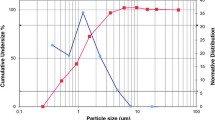Abstract
Formyl-methionyl-leucyl-phenylalanine (FMLP) is a synthetic acylated oligopeptide related to chemotactic peptides released by bacteria. In order to determine whether FMLP causes bronchoconstrictionin vivo, we studied the effects of neubulized FMLP on lung resistance (RL) in the rabbit. In fourteen rabbits baseline RL was measured and then dimethylsulfoxide (DMSO) alone and 0.3, 1, 3 and 10 mg/ml FMLP in DMSO was nebulized and inhaled by the rabbits over periods of 2 min each. After each concentration the RL was re-measured and the results expressed as a % of the RL following DMSO alone. In 6 rabbits the response to serial nebulization of DMSO alone was 5.5±10.4% (mean±2 SD). In 8 rabbits receiving FMLP there was a dose dependent increase in RL of 20% or greater whereas 6 rabbits failed to respond. Since there are known receptors for FMLP on neutrophils, 10 further rabbits were rendered neutropenic using nitrogen mustard and the studied as above. Eight of these rabbits failed to respond significatly to FMLP whereas 2 had a 20% or greater increase in RL. In each bronchial specimen from 6 additional rabbits FMLP failed to induce airway contractionin vitro. We conclude that FMLP causes a variable degree of bronchoconstriction in rabbits, that this response may, in part, be mediated via the neutrophil and is unlikely to be due to direct smooth muscle contraction.
Similar content being viewed by others
References
P.A. Ward, I.H. Lepow andL.J. Newman,Bacterial factors chemotactic forpolymorphonuclear leukocytes, Am. J. Pathol.52, 725–736 (1968).
E. Schiffmann, H.V. Showell, B.A. Corcoran, P.A. Ward, E. Smith andE.L. Becker,The isolation and partial characterization of neutrophil chemotactic factors from Escherichia coli, J. Immunol.114, 1831–1837 (1975).
H.J. Showell, R.J. Freer, S.H. Zigmond, E. Schiffmann, S. Aswanikumar, B. Corcoran andE. Becker,The structure-activity relations of synthetic peptides as chemotactic factors and inducers of lysosomal enzyme secretion for neutrophils, J. Exp. Med.143, 1154–1169 (1976).
E.J. Goetzl, D.W. Foster andD.W. Goldman,Isolation and partial characterisation of membrane protein constituents of human neutrophil receptors for chemotactic formylmethionyl peptides, Biochem.20, 5717–5722 (1981).
R.J. Freer, A.R. Day, N. Muthukumaraswamy, D. Pinon, A. Wu, H.J. Showell andE.L. Becker,Formyl peptide chemoattractants: A model of the receptor on rabbit neutrophils, Biochem.21, 257–263 (1982).
R.P. Daniele, M.S. Diamond andA. Holian,Demonstration of a formyl peptide receptor on lung macrophages. Correlation of binding properties with chemotaxis and release of superoxide anion, Am. Rev. Respir. Dis.126, 274–280 (1982).
J.T. O'Flaherty, H.J. Showell, E.L. Becker andP.A. Ward,Substances which aggregate neutrophils. Mechanism of action, Am. J. Pathol.92, 155–166 (1978).
R.J. Smith andS.S. Iden,Pharmacological modulation of chemotactic factor — elicited release of granule-associated enzymes from human neutrophils. Effects of prostaglandins, nonsteroid anti-inflammatory agents and corticosteroids, Biochem. Pharmacol.79, 2389–2395 (1980).
R.J. Smith, W. Wierenga andS.S. Iden,Characteristics of N-formyl-methionyl-leucyl-phenylalanine as an inducer of lysomal enzyme elease from human neutrophils, Inflammation4, 73–88 (1980).
K. Wong andK. Freund,Inhibition of the n-formylmethionyl-leucyl-phenylalanine induced respiratory burst in human neutrophils by adrenergic agonists and prostaglandins of the E series, Can. J. Physiol. Pharmacol.59, 915–920 (1981).
W. Jubiz, O. Radmark, C. Malmsten, G. Hanson, J.A. Lindgren, J. Palmblad, A.M. Uden andB. Samuelsson,A novel leukotriene produced by stimulation of leukocytes with formylmethionylleucylphenylalanine, J. Biol. Chem.257, 6106–6110 (1982).
M.D. Rossman, A.M. Cassizzi, A.D. Schreiber andR.P. Daniele,Pulmonary defense mechanisms. Modulation of Fc receptor activity in alveolar macrophages and other phagocytic cells by N-formylpeptides, Am. Rev. Respir. Dis.126, 136–141 (1982).
Y.F. Burka,Effects of compound 48/80 and formylmethionyl-leucyl-phenylalanine on isolated guinea pig airways, Int. Archs. Allergy Appl. Immun.73, 309–313 (1984).
R. Hamel, A.W. Ford-Hutchinson, A. Lord andM. Cimmo, Bronchoconstriction induced by N-formylmethionyl-leucyl-phenylalanine in the guinea pig; involvement of arachidonic acid metabolites, Prostaglandins78, 73–56 (1984).
C.L. Armour, J.L. Black, P.R.A. Johnson, K.S. Vincenc andN. Berend,Formylpeptide-induced contraction of human airways in vitro, J. Appl. Physiol. in press (1985).
J. Mead andJ.L. Whittenberg,Clinical measurement of Resistive and Elastic properties of the lungs, J. Clin. Invest.32, 588–589 (1953).
F. Yates,Contingency tables involving small numbers and the Chi 2 test, J. Royal Statistical Soc. Is, 217–235 (1934).
M.J. Holtzman, L.M. Fabbri, P.M. O'Byrne, B.D. Gold, H. Aizawa, E.H. Walters, S.E. Alpert andJ.A. Nadel,Importance of airway inflammation for hyperresponsiveness induced by ozone, Am. Rev. Respir. Dis.127, 686–690 (1983).
P.M. O'Byrne, E.H. Walters, B.D. Gold, H.A. Aizawa, L.M. Fabbri, S.E. Alpert, J.A. Nadel andM.J. Holtzman,Neutrophil depletion inhibits airway hyperresponsiveness induced by ozone exposure, Am. Rev. Respir. Dis.130, 214–219 (1984).
C.G. Irvin, P.M. Henson andN. Berend,Acute effects of airways inflammation on airway function and reactivity, Fed. Proc.41, 1358 (1982).
S.F. Quan, M.L. Witten, R.J. Lemen, J.L. Stevenson andH.R. Roseberry,Between and within animal variability of aerosolized histamine in normal rabbits, Am. Rev. Respir. Dis.129s, A278 (1984).
P.M. O'Byrne, E.H. Walters, H. Aizawa, L.M. Fabbri, M.J. Holtzman andJ.A. Nadel,Indomethacin inhibits the airway hyperresponsiveness but not the neutrophil influx induced by ozone in dogs, Am. Rev. Respir. Dis.130, 220–224 (1984).
D.T. Tanaka andM.M. Grunstein,Mechanisms of substance P-induced contraction of rabbit airway smooth muscle, J. Appl. Physiol.57, 1551–1557 (1984).
S. Spagnesi, R. Fantozzi, S. Luzzi, S. Brunelleschi, L. Giuliattini andL. Zilleti,Biological effects of formylmethionylleucylphenylalamine (FMLP) in comparison with substance P (SP), 9th luphar Congress, Lond, 1057pp. (1984).
W.A. Marasco, H.J. Showell andE.L. Becker,Substance P binds to the formylpeptide chemotaxis receptor on the rabbit neutrophil, Biochem. Biophys. Res. Comm.99, 1065–1072 (1981).
P.M. Henson, N.A. Schwartzman andB. Zanolari,Intracellular control of human neutrophil secretion II. Stimulus specificity of desensitization induced by six different soluble and particulate stimuli, J. Immunol.127, 754–759 (1981).
E.L. Becker,Chemotactic factors of inflammation, Trends in Pharmacol Sci.4, 223–225 (1983).
Author information
Authors and Affiliations
Rights and permissions
About this article
Cite this article
Berend, N., Armour, C.L. & Black, J.L. Formyl-methionyl-leucyl-phenylalanine causes bronchoconstriction in rabbits. Agents and Actions 17, 466–471 (1986). https://doi.org/10.1007/BF01965515
Received:
Accepted:
Issue Date:
DOI: https://doi.org/10.1007/BF01965515




